The 10 Wildest Market Days of 2018
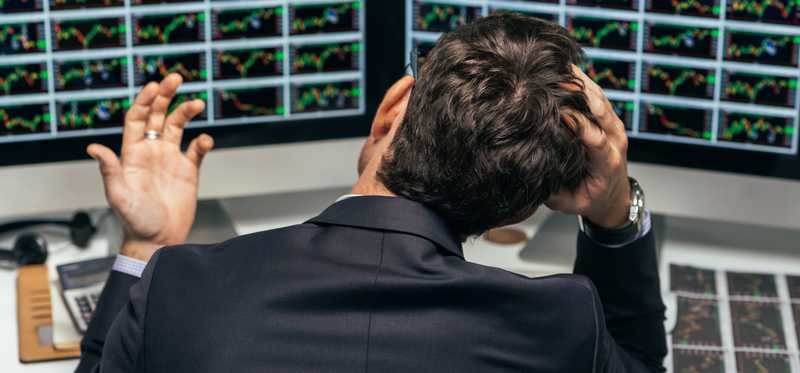
The 10 Wildest Market Days of 2018
What a difference a year makes
In 2017, the stock market had one of its steadiest years in history. Throughout the entire year, the broad-based S&P 500 (INDEX: ^GSPC) never declined by more than 4% from a recent high. Further, between August and the end of the year, it never fell more than 1%. It was a remarkable stretch that Wall Street and investors knew would eventually come to an end.
And boy, did it.
In late January and early February, the stock market’s wild ride began. The CBOE Volatility Index would wind up briefly soaring to nine-year highs as investors were abruptly reminded that markets can actually head down, too. Throughout much of the year, Wall Street and investors have been contending with a rollercoaster ride.
In nominal terms, the iconic Dow Jones Industrial Average (INDEX: ^DJI), arguably the most followed stock index in the world, logged nearly half of its 20-largest intraday point swings in its history this year. Let’s take a closer look at the 10 wildest swings of 2018 (presented in ascending order by total point value), as well as delve into what triggered these moves.
ALSO READ: 3 Stocks Built to Thrive in a Bear Market
Previous
Next

10. Dec. 4: 765.01-point swing
This one is probably still fresh in the minds of investors, because it happened just two weeks ago. Usually, we’re used to Santa Claus rallies in December, but investors were left with coal in their stockings as the Dow declined by as much as 818 points, and 765 points from peak to trough, on an intraday basis.
The reason for the steep nominal decline, and a common theme for 2018, is concern about trade-war escalation between the U.S. and China. Even with both sides exercising a 90-day moratorium on tariffs, there’s no guarantee that President’s Trump and Xi will be able to work out a trade deal that appeases both countries. The more time that passes without a long-term trade deal in place, the more volatility we could witness.
Previous
Next

9. April 2: 779.28-point swing
By the time the clock struck 4 p.m. EDT on April 2, the Dow would go on to lose nearly 459 points, with the Nasdaq Composite (INDEX: ^IXIC) and S&P 500 losing 193 points and 59 points, respectively. It was, according to CNBC, the worst start to the month of April since the Great Depression.
The catalyst that wound up erasing what would have been at best a 20-point intraday gain for the Dow was… drum roll… trade war worries. That’s right, Wall Street has been biting its nails with worry over the potential for a tariff escalation between the U.S. and China since early in 2018. Higher raw material costs have already bitten appliance makers like Whirlpool (NYSE: WHR), and there’s concern that these negatives could trickle into other industries and sectors, ultimately slow economic growth for the two largest economies in the world by GDP.
Previous
Next
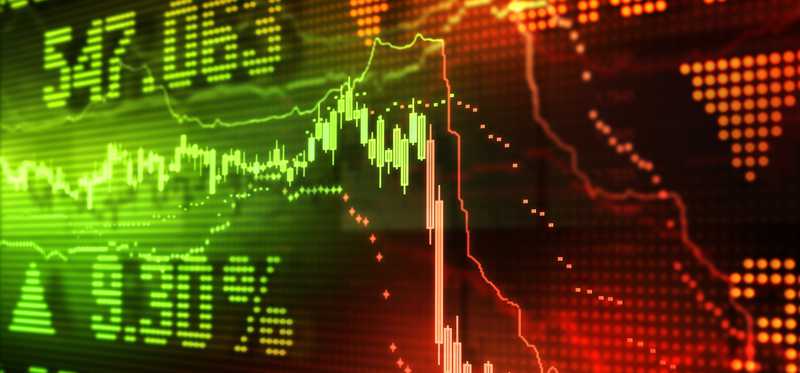
8. Oct. 11: 783.87-point swing
Deeply red days have been a common in 2018, and Oct. 11 was no different. Despite hitting an intraday high that saw the Dow up 85 points, it would end lower by almost 546 points, with decliners outnumbering the advancers by more than 7-to-1.
However, it’s important to recognize that despite the markets’ many down days in 2018, some of which might seem pretty substantial in nominal terms (let’s face it, we’re not used to seeing the Dow lose 500 points in a single session) none of them has even come close to breaking into the 20-largest percentage declines of all time. In order to do that, the Dow would need to fall by at least 7%. This is why focusing on percentages, rather than points, is important.
As for the reason behind the wild swing, look no further than weakness in technology stocks. For years, the so-called FAANG stocks have been virtually unstoppable. Recently, though, rising interest rates, which could make lending costlier, along with weaker holiday sales forecasts from the likes of Apple (Nasdaq: AAPL) and Amazon.com (Nasdaq: AMZN), have shown this prized group of widely-owned growth stocks to be fallible.
Previous
Next
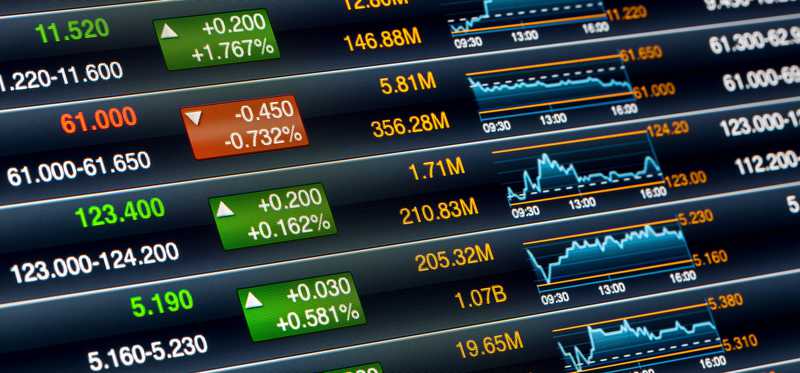
7. April 4: 785.80-point swing
Of course, not every wild market day led to investors being glum. On April 4, following an intraday decline of more than 500 points in the Dow, it would wind up erasing this loss and ended higher by 231 points. The turnaround was based on a combination of easing trade-war fears, as well as a healthy rebound in tech stocks, which had been ravaged to begin the month.
Notice something interesting about the date? It’s just two days after the Dow swung to a 459-point loss. An analysis from J.P. Morgan Asset Management released in 2016, “Staying Invested During Volatile Markets,” found that many of the markets’ best days occur within two weeks of its worst days. This is why staying the course with stocks and not trying to time the market is so important. The analysis showed that missing just 10 of the S&P 500’s best trading days over a 20-year period between 1995 and 2014 would have slashed your aggregate returns by almost two-thirds.
ALSO READ: Scary Markets, Frightening Stocks, and How to Keep From Panicking
Previous
Next
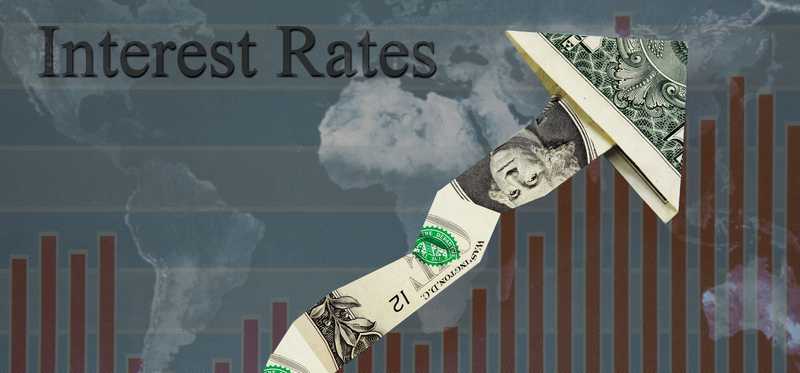
6. Oct. 10: 848.08-point swing
As this list continues, you’ll note that many of the largest point swings in the Dow this year have occurred very close to each other. Prior to its nearly 784-point swing on Oct. 11, the Dow underwent an 848-point swing on Oct. 10. The 122-year-old index wound up losing almost 832 points on the day, which is its third-largest single-session point decline in its storied history.
The downside catalyst was the fear of rising interest rates and bond yields. Higher bonds yields could lure investors away from volatile equities, while higher interest rates make it more expensive for growth stocks to borrow money and expand their business.
Ultimately, you’ll see a lot reasons for pops and drops in the stock market; but rarely are these reasons ever long-lasting or known in advance. This is yet another reason why timing the market doesn’t prove successful over the long run.
Previous
Next
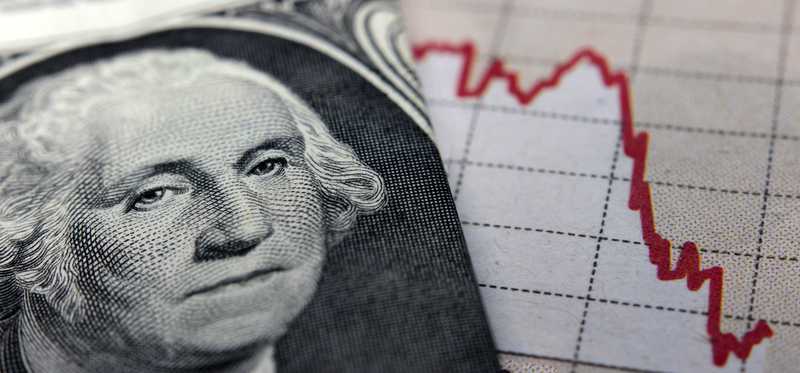
5. Oct. 29: 918.35-point swing
Now, this was a genuinely wild day. Although the Dow would end down by a pedestrian 245 points when the closing bell sounded, it was, at one point, up as much as 352 points, and down by 566 points.
The reason for the volatility? Yeah, it was trade war concerns again. It was reported at the time that the U.S. was considering a tariff on all remaining Chinese goods, which would have impacted about $257 billion worth of product. To boot, personal income was announced to have grown by only 0.2% in September. Since the U.S. is a consumption-driven economy, this news wasn’t viewed positively.
In hindsight, at least through today, we know that the China-U.S. trade fears haven’t been realized to their fullest extent. It’s not uncommon for investor emotions and fear to drive short-term trading, which is exactly what we witnessed on Oct. 29.
Previous
Next

4. Feb. 9: 1,021.85-point swing
On a nominal (not percentage) basis, the one-week stretch between Feb. 5 and Feb. 9 is the wildest in the Dow’s history. On Feb. 9, the Dow underwent the final of what would be four intraday point swings of more than 1,000 points in a five-day span. On this particular day, the Dow would end up by 330 points after, at one point, being down on an intraday basis by as much as 500 points.
The rebound in stocks was a combination of a relief rally after multiple heavy-loss days, and was a sign of confidence that lawmakers in the Senate would pass a federal budget that would avoid a government shutdown. As we now know in hindsight, the Senate did avoid that shutdown, which helped lead to a modest market rebound in the following couple of weeks.
Previous
Next

3. Feb. 8: 1,054.45-point swing
On the previous day, Feb. 8, the Dow swung by an even wider margin of 1,054 points. Most notably, it would log its second-largest point decline in history, ending the day lower by just shy of 1,033 points. What drove this downside was a combination of short-term traders being fearful, worries about a possible government shutdown, and concern about rising interest rates slowing economic growth.
Mind you, as noted earlier, this percentage decline isn’t anywhere close to its 20-largest declines in history. As the stock market has increased in value over time, we as investors need to adjust our perceptions to match that growth. The easiest way to do to that and not caught get up in point-driven fear is by focusing on percentages.
Previous
Next

2. Feb. 6: 1,167.49-point swing
The craziest day with a positive finish for the Dow occurred on Feb. 6. When the closing bell rang, the Dow had logged what’s now its sixth-best single-day point gain in history of 567 points. However, the Dow was, at one point, down nearly 570 points before staging its incredible turnaround.
What might be most notable about this day is that there wasn’t any economic data released, aside from December’s trade deficit data, which is hardly ever much of a market mover. There also weren’t any announcements from the Fed or White House for investors to pore over. In other words, there wasn’t a whole lot of justification for the vacillations in the stock market… other than investor emotions. Even if we as long-term investors stay grounded, it won’t stop the market from experiencing crazy days like this.
Previous
Next

1. Feb. 5: 1,596.65-point swing
Last, but not least, the granddaddy of all wild market days. On Feb. 5, following a 666-point decline in the Dow on Friday, Feb. 2, the Dow would swing nearly 1,600 points into the red before closing down 1,175 points, the largest single-day decline in history. Of course, on a percentage basis we’re only talking about a 4.6% move lower.
Interestingly, there wasn’t any specific news event that can be pinpointed as driving the market lower. There was a continuation of the down move from Friday after disappointing earnings from Apple and Alphabet (Nasdaq: GOOG)(Nasdaq: GOOGL), and some concern about inflation picking up, which would lead to the Fed getting more aggressive with interest rates. But, neither of these factors stands out as a logical reason for a nearly 1,600-point decline in the Dow on an intraday basis, or its closing value of minus 1,175 points.
Previous
Next

This volatility is just a blip over the long run
As much as investors would like to do away with volatility, recessions, and stock market corrections, all three are a natural part of the investment cycle, and a risk that all investors must take if they want an opportunity to generate substantial returns. The important thing to remember is this: When you look back at this so-called volatility many years from now, it’ll probably look like nothing more than a blip on long-term stock charts.
You see, time is the greatest ally of investors. Despite the S&P 500 undergoing 37 corrections of at least 10% since the beginning of 1950, each and every one, save for the current correction, have been completely erased by a bull market rally. Staying invested for long periods of time in high quality stocks is a near-guaranteed way to make money.
John Mackey, CEO of Whole Foods Market, an Amazon subsidiary, is a member of The Motley Fool’s board of directors. Suzanne Frey, an executive at Alphabet, is a member of The Motley Fool’s board of directors. Sean Williams has no position in any of the stocks mentioned. The Motley Fool owns shares of and recommends Alphabet (A shares), Alphabet (C shares), Amazon, and Apple. The Motley Fool has the following options: long January 2020 $150 calls on Apple and short January 2020 $155 calls on Apple. The Motley Fool has a disclosure policy.
Previous
Next
Invest Smarter with The Motley Fool
Join Over Half a Million Premium Members Receiving…
- New Stock Picks Each Month
- Detailed Analysis of Companies
- Model Portfolios
- Live Streaming During Market Hours
- And Much More
READ MORE
HOW THE MOTLEY FOOL CAN HELP YOU
-
Premium Investing Guidance
Market beating stocks from our award-winning service
-
The Daily Upside Newsletter
Investment news and high-quality insights delivered straight to your inbox
-
Get Started Investing
You can do it. Successful investing in just a few steps
-
Win at Retirement
Secrets and strategies for the post-work life you want.
-
Find a Broker
Find the right brokerage account for you.
-
Listen to our Podcasts
Hear our experts take on stocks, the market, and how to invest.
Premium Investing Services
Invest better with The Motley Fool. Get stock recommendations, portfolio guidance, and more from The Motley Fool's premium services.